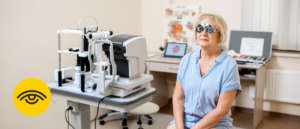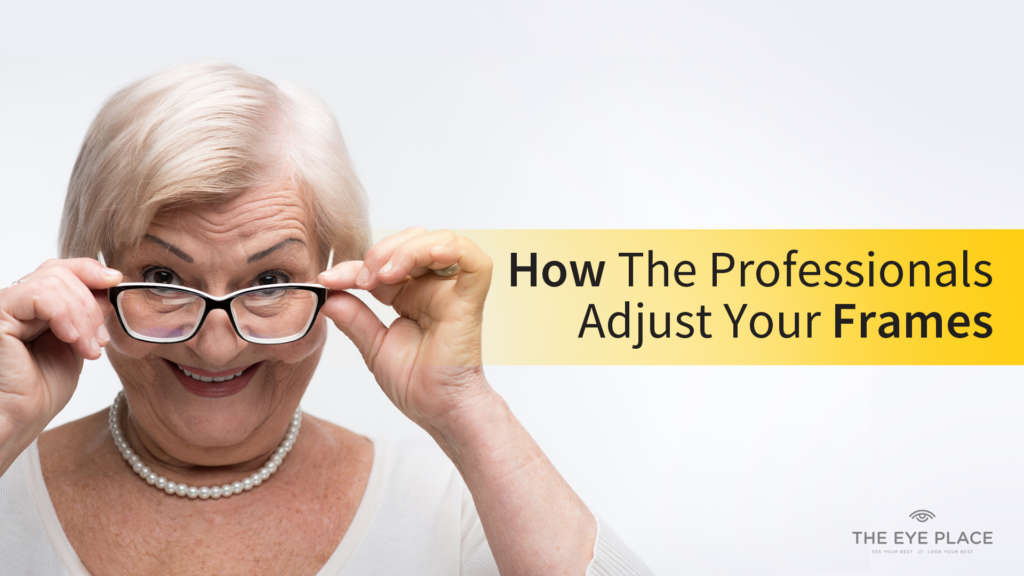We all know the frustrations of glasses that are too loose or too tight. Constantly pushing your glasses back to the top of your nose or even worse, constant headaches from really tight frames. It can make some of the DIY frames adjusting techniques on the internet very appealing.
But not all information on the internet is true, some of these techniques might put your opticals and sunglasses in danger.
Here is the second part of the Adjusting Frame series and let us see how Adam, our optometrist, do the adjustment the professional way.
How We adjust your Frames
So, now that we’ve gone through the different ways on how to adjust our plastic and metal frames, follow me on through our dispensing area here at The Eye Place and I’ll show you the machines and techniques that we use to adjust your glasses.
Plastic Frames
The most common machine used to adjust acetate or plastic frames is the frame heater. Essentially if you’ve got a plastic frame that is one arm too high, or it’s been stretched from putting them on your head, rolled on them or sat off them, then we just need to heat the frame to bend it back into position.
One of the things that we can do is heat the frame at the bridge to adjust the width of the frame. It’s just a matter of popping a little attachment into the frame heater, switch it on, and then just concentrating that heat right on the bridge, just long enough to make the frame a little more malleable.
Then we can bend it back into position, and straighten it up. When one arm is higher than the another, it’s just a matter of twisting that frame back to alignment, so once we’ve got that on again then it will be nice and straight.
The next way we can adjust is behind your ears. If you need a frame to fit tighter or looser, it’s just a matter of taking off the heating attachment, concentrating the heat right at the temple. Then it’s just a matter of changing the bend, so we are going to have that fitting much tighter and more snug behind your ears.
We can also wrap it to give it a tighter fit if required. And, we can actually lengthen where the bends need to be. It’s just a matter of heating here or there at the junction of the front of the frame and the temple joint of the frame or either bending that out or bending that in.
Metal Frames
The next frame material that we can adjust is a metal frame. Metal frames sitting nice and crooked, like this one (where it’s much higher here on my left than it is on the right), we need to realign the temples to have them sitting generally on top of your ears. By the way, 9 out of 10 people have one ear higher than the other.
A metal frame is typically symmetrical but we have to adjust for your ears, ear height and in position, so that way when your frame sitting nice and flat and straight on your face. I’ll just adjust these now.
Typically with the metal frame, we’ll be using some adjustment tools. We’ve got the plier for this one, so as you can see with the frame here on the bench, we’ve got one arm much higher than the other. So, using the plier, it’s just a matter of bending that arm down.
The next part we could adjust with the metal frame could be at the nose. If you want the frame to sit up higher or lower, it’s just a matter of adjusting the nose pads – which are the two parts here that sit right across the bridge of your nose that put the frame into position.
It’s a matter of using another tool, which wraps around the nose pad and the nose pad holder so I’m just bending this in now, and this will bring the whole frame up a little higher. If I bring the pads out, that’s going to drop the frame down so it sits a little bit lower on the bridge.
To adjust the arm for a metal frame, it’s similar to adjusting a plastic frame, as metal arms have a plastic sheath over the ends. So, it’s just a matter of heating, and bending to make them tighter or looser, wrapping them if you prefer for a more secure fit.
Nylon Frames
Lastly, another frame that we come across is what’s called the nylon frame. A nylon frame, or nylon rim, is essentially where we’ve got a metal frame at the top, then the lens itself is held by a piece of nylon at the bottom. If your lens happens to pop out, which can happen if you fall asleep while
you’re wearing your glasses, or you’re wrestling with the kids, it may pop out. To get the lens back in, we simply re-nylon the frame and just getting into the right thickness, the right length so the lens will fit nice and snug again. So just to pop that one in, you get the nose side in firstly, and the inside, grab our piece of cord there, slip that trough the grout, bring that up, all the way to the nose, get rid of that, and everything is back in there nice and secure again. Covered in fingerprints but that’s how you do it!
For any frame, we can also tighten screws if they’re a little bit loose or replacing screws if the threads been a bit worn.
At the end of any adjustment, we wanted to give the frames a good clean. To clean the frame & lenses, we clean with lens spray. Spraying the front and the back surface of your lenses, then spread that solution across the front and back, so that’s it isn’t picking up any grease or oils from your skin and fingerprints, Then, with a tissue, wipe the excess off. We always advised to only use the tissue if your lenses are wet, some of the coatings and the paper fibres in the tissues can cause scratches or imperfection in the reflective coating and that will cause them to peel over time.
Any of the lenses that we use here at The Eye Place have an anti-reflective coating, they will be covered by a 2-year warranty which is effective for re-coatings. The final step is just to wipe and buff that lenses up with a lens cloth so it’s nice and clean and clear.
There we go!
Nice and clear.
Thanks for watching, hope to see you soon at The Eye Place.









